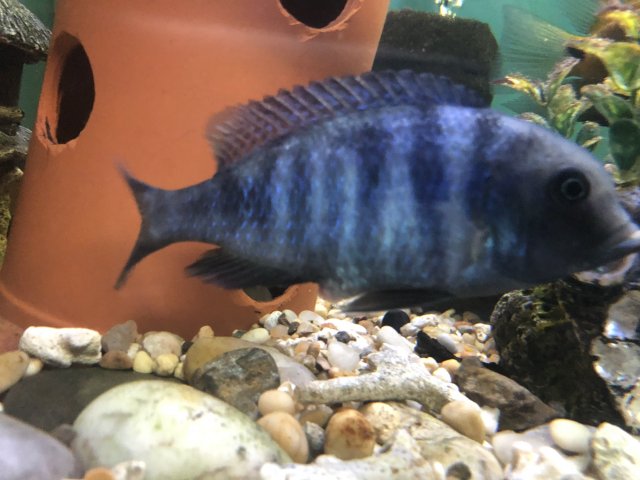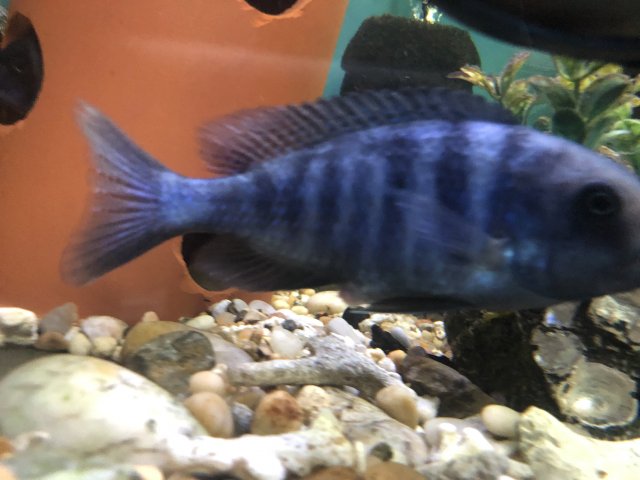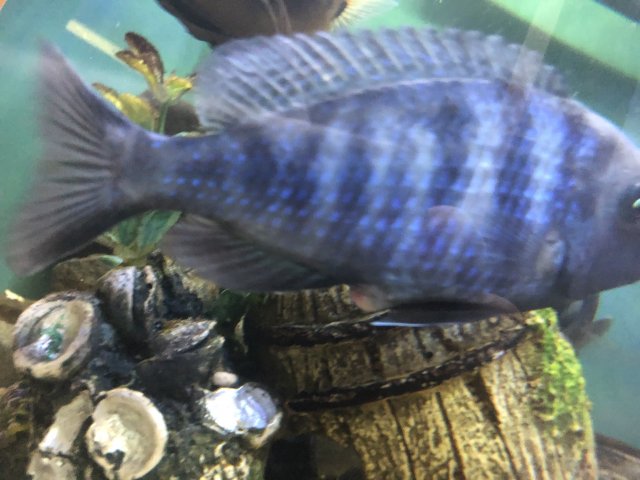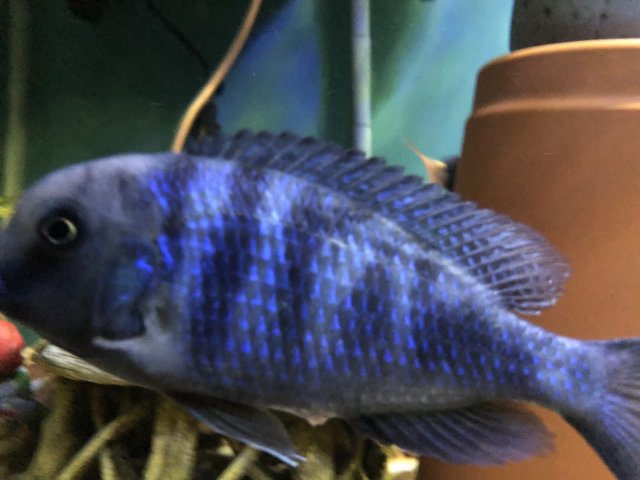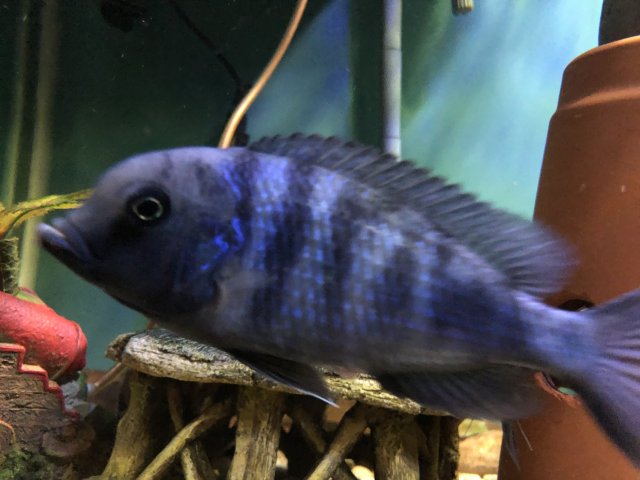oh ok i have not seen any sign of mating between her and any of the 3 male dolphins though. She is back to normal now, so does that mean she will less likely be able to spawn if she has this issue? thanks for the information much appreciated thanks.
If it is an egg impaction problem it depends on the reason for the problem. I did a thread with a good bit of research on this years ago on cyphos.com, but that forum has folded so I've lost those references, can't link to it or go back and review it. So most of this is what I've experienced (or seen) with Cyphotilapia, besides what I remember from my research.
With Cyphotilapia: Among Cyphotilapia females that have trouble releasing eggs, it's typically for undetermined reasons. I did a poll on it with pretty good participation on cyphos.com and it didn't reveal anything, some are just susceptible to it regardless of feeding, reasonable variations in water chemistry among frontkeepers, any of the foods commonly used by members of that site, etc. Probably a genetic component, but some in a group from the same original parents may have an issue and others not. Some suggested that a lack of a good male breeder, whether health, age, temperament or whatever, might be a factor in some cases-- possible, but in some groups members had it was only one or two females with any issue and others in the group had no issues.
If you catch it early enough in a susceptible female, as in knowing a potential spawn is coming or impending, you can still get a spawn from that batch of eggs. Past a certain point the eggs lose viability, at some point they can fester, etc. So past a certain point you're just trying to preserve the health of the female. It can kill females if it gets past a certain point and she can't release the eggs and they become infected, it's not an easy cure. It's not an exact science for a home hobbyist, it's a matter of knowing behavior, being observant, and an ounce of prevention. Some people never have the issue but, since mine have at times, I keep Epsom salt levels higher than I used to for my breeding gourp and I add some extra when I observe pre-spawning behavior, evidence a female's developing eggs, etc. It's made a difference.
People's experience varied somewhat. Some had successful spawns from a certain female before she ever had the issue, sometimes it happened once or twice and then the same fish was okay afterward, some females had a chronic issue with it, some didn't survive beyond one or two incidents-- again, it's hard to cure once it reaches a certain point.
With fish (and some other animals) in general: Among the possible causes can be illness, damage to reproductive organs, a nutritional deficiency, in some species it might be something like wrong water temperature, etc.
One of the best sources I found for people with experience with the problem was goldfish sites, the weird shapes of some goldfish doesn't give them much room inside and makes them susceptible. Sometimes angelfish have an egg impaction issue also, I found stuff on a couple of angelfish sites.
Our experience on cyphos was that Epsom salt is the best treatment and meds don't make much difference, it wasn't that kind of a problem-- until or unless the egg mass become infected and then you're just trying to save your fish. We didn't find any one medication that consistently worked, sometimes Kanamycin, Metro, or a combination, or other meds you might use to treat bloat. On that score, a Malawi cichlid that overfeeds and is over-rounded could have some egg issues also. Certainly, symptoms of bloat could also cause an egg issue.
That's most of what I know. I don't normally use meds for preventive reasons, but I might do a
just in case there was a contributing infection treatment in your case, whether with Epsom salt, Metro, etc., or try feeding something like NLS Thera-A or Hex Shield.
